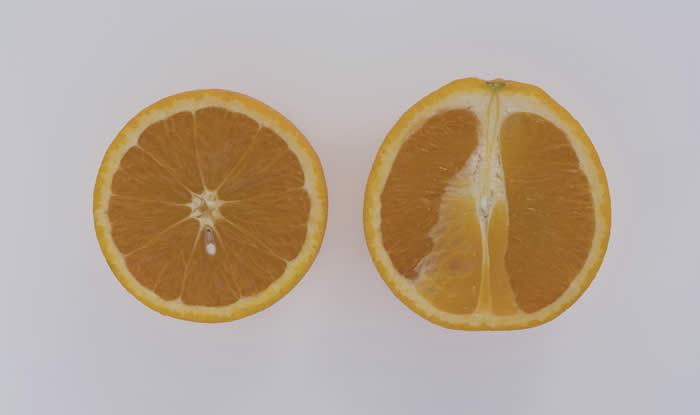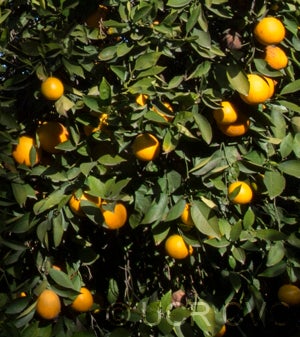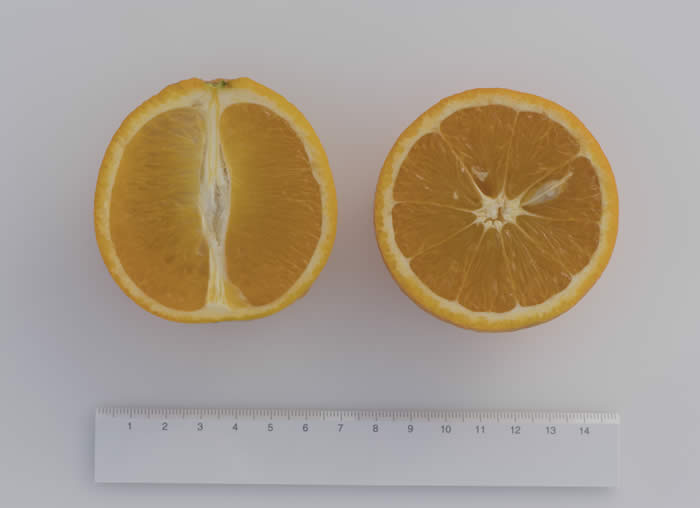Citrus sinensis (L.) Osbeck RUTACEAE
CRC 3754
PI 539618
Source
Received as seed from CRC 1045, 1970.
Parentage/origins
Parents unknown.
Rootstocks of accession
Carrizo citrange, C-35 citrange
Season of ripeness at Riverside
January to March
Notes and observations
Polyembryonic.
2/8/1988, EMN: Medium size round orange. Light rind color. Moderately seedy-- late season, still tart now. This nucellar budline and its daddy, CRC 1045, appear completely identical.
Description from The Citrus Industry Vol. 1 (1967)
"Fruit medium-sized, subglobose to spherical; basal area sometimes with radiating furrows; apex rounded or slightly flattened; areole usually distinct; seeds few. Rind medium-thick; surface smooth to slightly pebbled; color light orange. Tendency to color in advance of maturity, while still acid. Flesh juicy; flavor somewhat acid until full maturity, when it becomes sprightly and readily acceptable. Fruit does not hold well on tree after maturity, dropping freely. Late midseason in maturity though coloring early.
Tree moderately vigorous, medium-sized, and regularly productive. A tendency to give rise to bud variations has been noted in California (Webber, 1943, p. 516) and Australia.3
The origin of Seleta is unknown, but it seems likely that it is an old Portuguese variety, for in 1925 it was listed among those currently grown there (Bobone, 1938) and the synonym employed, Lusitana, referred to the ancient Roman provincial name for Portugal. Presumably taken to Brazil at an early date, it is the variety from which the Bahia or Washington navel orange is supposed to have originated (Dorsett, Shamel, and Popenoe, 1917), although to the writer this seems improbable. According to Moreira and Filha (1963), it is still of commercial importance in Brazil, where several clonal selections are currently popular—Abacaxi, Amarela, Branca, Itaborai, and Vermelha. It seems likely that this variety is the Siletta of Australia as the Sydney Gazette of April 22, 1824 (Bowman, 1955) lists Celeta and Bahia oranges among recently introduced citrus varieties. It early achieved commercial importance in Australia, which continued until about 1920. Since that time it has been infrequently planted and only for juice purposes.
Two clones have long been recognized in Australia—White Siletta, which corresponds to the description given here, and Red Siletta, so-named because of its deeper color. The Red Siletta is presumably of local though unknown origin. The first-mentioned clone is that which achieved principal importance. The fruit of the latter is coarser in rind texture and somewhat lower in quality; the tree is more vigorous and larger."
Availability
Not commercially available in California.
USDA Germplasm Resources Information Network page for Selecta sweet orange (CRC 3754)



